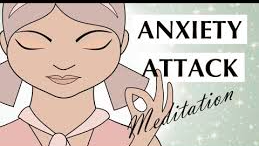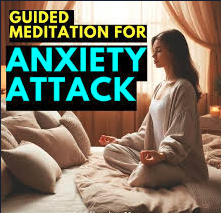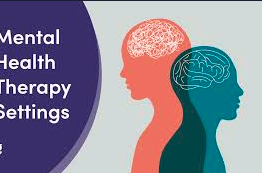Meditation for Anxiety Attacks:
Introduction
meditation for anxiety attack: Anxiety attacks can feel overwhelming, leaving individuals with racing thoughts, shortness of breath, and an unsettling sense of panic. While medical treatment and therapy are essential for severe cases, many people are turning to meditation for anxiety attacks as a natural way to calm their minds and regain control.
Meditation has been practiced for centuries to cultivate peace and mindfulness. Modern research confirms its effectiveness in reducing stress, regulating emotions, and easing anxiety symptoms. In this article, we’ll explore how meditation works, the best techniques to use during anxiety attacks, and practical steps to include it in daily life.
Understanding Anxiety Attacks
Before diving into meditation, it’s important to understand what anxiety attacks are.
Common symptoms of anxiety attacks include:
- Rapid heartbeat or palpitations
- Shortness of breath
- Sweating and trembling
- Dizziness or lightheadedness
- Intense fear or worry
- A feeling of losing control
Anxiety attacks can strike suddenly and may be triggered by stress, traumatic experiences, or even without any obvious cause. Practicing meditation for anxiety attacks helps individuals develop resilience and reduce the intensity of these episodes.
Why Meditation Helps with Anxiety Attacks
Meditation is more than just sitting quietly; it is a mental training practice that enhances awareness and calms the nervous system.
Key benefits include:
- Regulating the nervous system: Meditation activates the parasympathetic nervous system, which lowers heart rate and relaxes the body.
- Reducing cortisol levels: Lower stress hormones mean less tension and worry.
- Enhancing emotional awareness: It teaches you to observe anxious thoughts without judgment.
- Improving focus: By anchoring attention to the present, it reduces spiraling negative thoughts.
This makes meditation one of the most effective natural techniques for managing anxiety attacks.
Best Meditation Techniques for Anxiety Attacks
1. Mindfulness Meditation
Mindfulness meditation involves paying attention to the present moment without judgment. Meditation for anxiety attack.
How to practice:
- Sit comfortably and close your eyes.
- Focus on your breathing.
- Notice any anxious thoughts, but let them pass without reacting.
- Gently bring your attention back to the breath.
Mindfulness is one of the most widely studied forms of meditation for anxiety attacks, shown to reduce stress and improve overall well-being.
2. Guided Meditation
For beginners, guided meditation is a great way to stay focused. Using an app or audio recording, a teacher leads you through calming instructions.
Benefits:
- Provides structure during overwhelming moments.
- Uses soothing music or affirmations to relax the mind.
- Helps redirect attention from anxiety to inner peace.
3. Breathing Meditation
Since anxiety often leads to rapid or shallow breathing, focusing on the breath can bring instant relief.
Steps:
- Inhale slowly through your nose for 4 counts.
- Hold your breath for 2 counts.
- Exhale gently through your mouth for 6 counts.
- Repeat until calm.
Breathing meditation signals the body to relax, making it one of the fastest ways to reduce panic.
4. Body Scan Meditation
This meditation focuses on relaxing each part of the body to release physical tension caused by anxiety attacks.
How to do it:
- Lie down or sit comfortably.
- Starting from the toes, notice any sensations.
- Move slowly upward through your legs, torso, arms, and head.
- Release tension as you breathe deeply.
This method grounds the mind and relaxes the body simultaneously.
5. Loving-Kindness Meditation (Metta)
Anxiety attacks often come with negative self-talk. Loving-kindness meditation replaces fear with compassion.
Steps:
- Close your eyes and breathe deeply.
- Silently repeat phrases like:
- “May I be safe.”
- “May I be calm.”
- “May I be at peace.”
- Extend these wishes to loved ones and eventually all beings.
This practice nurtures self-compassion, which helps reduce fear and anxiety.
How to Use Meditation During an Anxiety Attack
When an anxiety attack occurs, it can be difficult to think clearly. Meditation offers quick relief if practiced consistently.
Tips for immediate relief:
- Find a quiet space or close your eyes where you are.
- Start with deep breathing to regain control.
- Use grounding techniques, like noticing the feeling of your feet on the floor.
- Choose a short, familiar meditation practice to calm your thoughts.
Consistency is key. Practicing meditation daily makes it easier to use during unexpected anxiety attacks.
Incorporating Meditation into Daily Life: meditation for anxiety attack

While meditation helps during anxiety attacks, regular practice strengthens resilience over time.
Daily routine suggestions: meditation for anxiety attacks
- Morning: Begin your day with 5–10 minutes of mindfulness meditation.
- Work breaks: Take a short breathing meditation break to reset your mind.
- Evening: Practice body scan meditation before bed to improve sleep.
- Whenever stress arises, use guided meditations from apps like Calm, Headspace, or Insight Timer.
Additional Lifestyle Practices to Support Meditation
Meditation works best when combined with other healthy habits.
Supportive practices include:
- Exercise regularly: Physical activity lowers stress levels.
- Eat a balanced diet: Nutritious foods support brain health.
- Limit caffeine and alcohol: Both can worsen anxiety.
- Sleep well: Aim for 7–9 hours of quality rest.
- Stay socially connected: Talking to loved ones can help reduce feelings of isolation.
Together with meditation, these habits strengthen mental well-being.
Common Challenges and How to Overcome Them
Some beginners struggle with meditation for anxiety attacks. Here’s how to handle common issues:
- “I can’t stop my thoughts.” → Remember, meditation is not about stopping thoughts but observing them without judgment.
- “I don’t have time.” → Even 2–5 minutes of practice daily can make a difference.
- “I get more anxious when I try.” → Start with guided meditations for reassurance and structure.
- “I lose focus quickly.” → Use breathing as an anchor to bring your attention back.
Conclusion
Meditation for anxiety attacks is a powerful tool that calms the mind, relaxes the body, and helps regain control during stressful moments. By practicing techniques such as mindfulness, breathing meditation, and loving-kindness meditation, individuals can build resilience against future anxiety episodes.
Remember, consistency is more important than perfection. Even a few minutes of daily meditation can gradually transform how you respond to stress. Combined with healthy lifestyle habits and professional support if needed, meditation offers a path toward peace and emotional balance.
FAQs About Meditation for Anxiety Attacks
1. Can meditation stop an attack immediately?
Yes, breathing and mindfulness meditation can help calm symptoms quickly, but consistency makes them more effective.
2. How long should I meditate for anxiety relief?
Start with 5–10 minutes daily and gradually increase to 20 minutes for deeper benefits.
3. Do I need special equipment to meditate?
No. All you need is a quiet space, a comfortable posture, and focused attention.
4. Is guided meditation better for anxiety?
Guided meditation is especially helpful for beginners as it provides structure and reassurance.
5. Can meditation replace therapy or medication for anxiety?
Meditation supports mental health but should not replace professional treatment for severe anxiety disorders.





